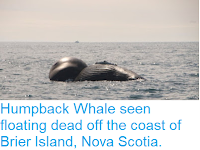The Government of Japan has announced its intention to withdraw from the International Whaling Commission and resume commercial Whaling from July 2019, in a statement issued on 26 December 2018. Japan is currently allowed to take 333 Minke Whales, Balaenoptera spp., each year, officially for
scientific research, but critics of the policy claim that as the meat of
these animals is sold, the policy is effectively a cover for commercial
Whaling. Under the new plan the Japanese fleet would be able to harvest as many Minke, or other Whale species not considered to be endangered, from its own waters as its government allows, but would be obliged to halt all Whaling in non-Japanese waters, notably in the Southern and Atlantic oceans, where its activities have received the most criticism.
The Japanese Whaling vessel Nisshin Maru. Kyodo News.
The International Whaling Commission introduced a moratorium on commercial Whaling in 1986, which was originally intended to be a temporary ban until an agreement on sustainable hunting can be reached, but this has evolved in a permanent arrangement to the frustration of Japan and other Whaling nations, such as Norway, Iceland, Greenland and the Faroe Islands, which claim Whaling is part of their culture.
A Japanese vessel hauls in a Minke Whale. EPA.
The International Whaling Commission permits Whaling using indigenous methods by some countries, including the Faroe Islands, where Long-finned Pilot Whales, Globicephala melas, and Atlantic White-sided Dolphins, Lagenorhynchus acutus, are
targeted, with about 800 animals being killed each year, by driving
them onto beaches and spearing them, Greenaland, where a variety of
Whale species are targeted, Alaska, where indigenous groups hunt about
500 Beluga Whales, Delphinapterus leucas, and about 40 Bowhead Whales, Balaena mysticetus, each year, the Russian Far East, where indigenous groups take about 140 Grey Whales, Eschrichtius robustus,
Canada, where several indigenous groups take a small number of Whales
in the Arctic Circle each year, the Caribbean, where several groups in
Grenada, Dominica, St Lucia and the Grenadines are allowed to take small
numbers of Short-finned Pilot Whales, Eschrichtius robustus, Pygmy Killer Whales, Feresa attenuata, Spinner Dolphins, Stenella longirostris, and Humpback Whales, Megaptera novaeangliae, and the Indonesian islands of Lembatta and Solor, where Sperm Whales, Physeter macrocephalus,
and Dolphins are hunted. None of these groups sell Whale meat
commercially, though some is traded or bartered within communities
(Greenland has been repeatedly accused of breaching this rule by selling
Whale meat to tourists, and exporting Whale meat to Denmark).
A group of indigenous Whalers seeking a Bowhead Whale off the coast of Alaska. John Craighead George/North Slope Borough Department of Wildlife Management/International Whaling Commision.
Other than this, all Whaling activities worldwide have been banned since
1986, when a moratorium on the taking of Whales agreed by the
International Whaling Commission in 1982 came into place. However, in
many cases this is not because Whales are considered to be endangered,
but because of the difficulties involved in policing the industry, and
considerations about the intelligence and emotional well being of
Whales, which Japan and some other nations argue is outside the original
remit of the commission. Of the two species of Minke Whale the Common
Minke Whale, Balaenoptera acutorostrata, is considered to be of Least Concern under the terms of the International Union for the Conservation of Nature's Red List of Threatened Species, while the Antarctic Minke Whale, Balaenoptera bonaerensis,
is considered to Near Threatened, with this diagnosis based upon
concerns about disappearing ice sheets in its Antarctic environment
rather than the threat presented by Whaling (and is largely based upon
data gathered by scientists attached to the Japanese Whaling fleet).
A Common
Minke Whale, Balaenoptera acutorostrata, off the coast of Antarctica. Jason Gedamke/Australian Antarctic Division.
Five species of Whale are currently considered to be Endangered under the terns of the Red List, the Sei Whale, Balaenoptera borealis, the Blue Whale, Balaenoptera musculus, the Fin Whale, the North Atlantic Right Whale, Eubalaena glacialis, and the North Pacific Right Whale, Eubalaena japonica, all of which are large, slow breeding, Baleen Whales, which are not thought to have recovered from former commercial Whaling. Only one of these species, the Fin Whale, is still hunted, with Iceland setting quotas of between 150 and 200 Fin Whales to be taken each year, the meat of which is exported to Japan. However, this hunt is often disrupted by environmental groups such as Sea Shepherd, which sunk two Icelandic Whaling vessels in 1986, and which has succeeded in completely disrupting hunts in other years.
See also...
Follow Sciency Thoughts on
Facebook.










